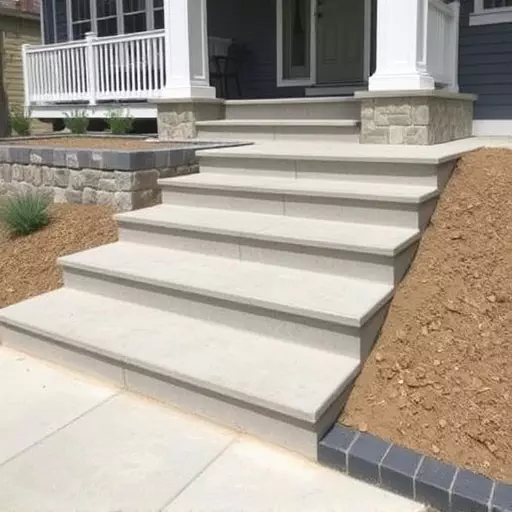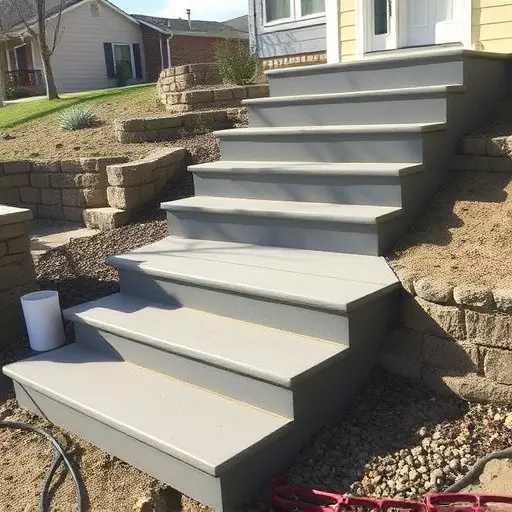Concrete step construction in Toledo, OH, is evolving towards sustainability, driven by environmental awareness and demand for eco-friendly solutions. The process starts with layout design, foundation preparation, reinforcement, and concrete pouring, followed by installation of support structures. Recent trends include using recycled aggregates and biodegradable binders to reduce carbon footprints and unique aesthetics, especially in residential projects. Commercial sector adoption is significant, transitioning from conventional high-emission mixes to precast options made from recycled content and lightweight concrete blends. This shift not only minimizes environmental impact but also offers enhanced durability and reduced maintenance costs over time.
Concrete steps are a fundamental element in both residential and commercial spaces, but traditional construction methods can have significant environmental impacts. This article explores the shift towards eco-friendly materials in concrete step construction. We delve into understanding traditional processes, examining the rise of sustainable alternatives for residential steps, and analyzing how commercial projects are embracing greener approaches. Discover the benefits of recycled and natural materials, and gain inspiration from successful case studies implementing these innovative solutions in Toledo and beyond.
- Understanding Traditional Concrete Step Construction
- The Rise of Eco-friendly Materials in Residential Concrete Steps
- Commercial Concrete Step Construction: A Shift Towards Sustainability
- Benefits of Using Recycled and Natural Materials for Concrete Steps
- Case Studies: Successful Implementations of Eco-friendly Concrete Step Materials
Understanding Traditional Concrete Step Construction
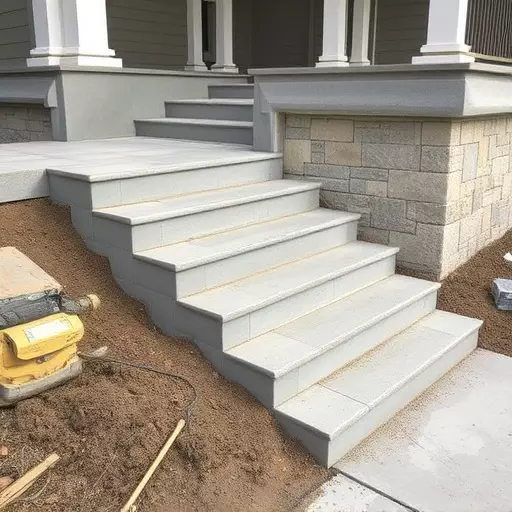
Concrete step construction is a fundamental aspect of building both residential and commercial structures in Toledo and beyond. The traditional process involves several steps that begin with designing the step layout, ensuring it meets structural requirements and aesthetic preferences. Once approved, the foundation is prepared, usually involving digging and laying out the step’s base. Reinforcing bars are then placed to enhance strength before concrete is poured and levelled, creating a solid base for the steps.
This foundational layer sets the stage for the subsequent construction phases, including adding support structures like stringers and treads. These components provide the necessary stability and load-bearing capacity, ensuring safety for all users. The final touches involve finishing the step surface with various materials to enhance durability, appearance, and slip resistance, catering to both residential concrete steps and commercial concrete step construction needs in Toledo’s diverse building landscape.
The Rise of Eco-friendly Materials in Residential Concrete Steps
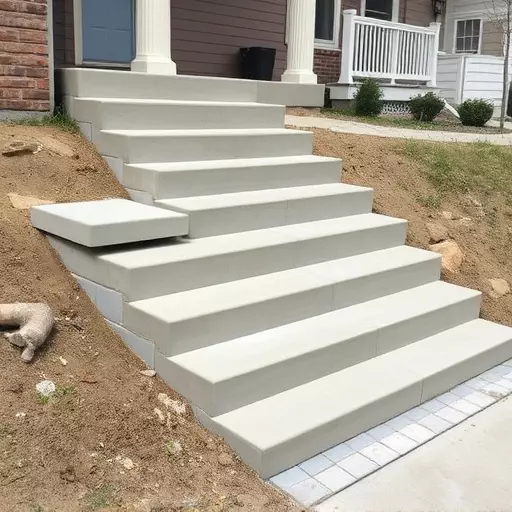
In recent years, there’s been a noticeable shift towards eco-friendly materials in both residential and commercial spaces, and concrete steps are no exception. The traditional concrete step construction process in Toledo has evolved to incorporate more sustainable alternatives. This change is driven by growing environmental awareness and the need for long-lasting, low-maintenance solutions.
Residential concrete steps now often feature materials like recycled aggregates, which not only reduce the carbon footprint but also offer unique aesthetic appeal. Additionally, manufacturers are experimenting with biodegradable binders and admixtures to further minimize the environmental impact without compromising strength and durability. This trend towards eco-friendly concrete step construction is not just a fad; it’s a response to the demand for greener options in both residential and commercial concrete step projects throughout Toledo.
Commercial Concrete Step Construction: A Shift Towards Sustainability
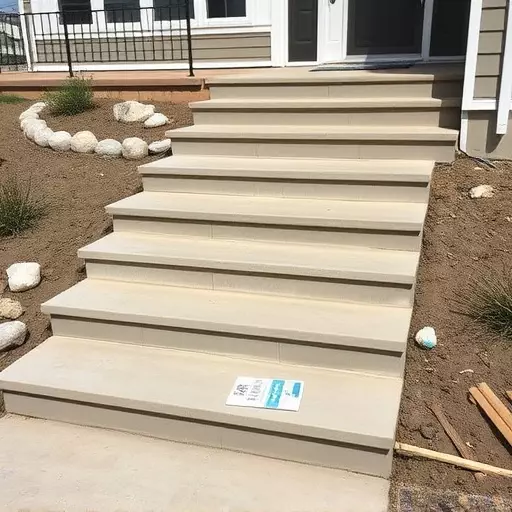
The traditional concrete step construction process in Toledo has undergone a significant shift towards sustainability, particularly in the commercial sector. Historically, concrete steps were primarily made using conventional concrete mixes, which had substantial environmental implications due to high energy consumption and carbon emissions during production. However, as awareness of ecological concerns grows, contractors and builders are increasingly opting for eco-friendly alternatives.
This change is driving the adoption of innovative materials and techniques in commercial concrete step construction. For residential concrete steps, manufacturers now offer precast options made from recycled content, reducing the environmental footprint at both the production and end-of-life stages. In addition, advancements in mixing technology allow for the creation of lightweight concrete blends with lower carbon emissions, further enhancing sustainability without compromising structural integrity. These developments underscore a growing commitment to preserving our planet while creating durable and aesthetically pleasing stepping solutions across various projects in Toledo.
Benefits of Using Recycled and Natural Materials for Concrete Steps

Using recycled and natural materials in concrete step construction offers a sustainable and environmentally friendly approach that is gaining traction in both residential and commercial projects, such as those in Toledo. These materials not only reduce the environmental impact of concrete production but also provide several benefits for builders and homeowners alike.
One key advantage is the significant decrease in carbon footprint associated with recycled content. Incorporating reclaimed aggregate or using natural alternatives like wood fibers or bamboo can substantially cut down on the energy-intensive process of manufacturing new concrete. Additionally, these materials often exhibit superior durability, ensuring that residential and commercial concrete steps last for years with minimal maintenance. This longevity translates to cost savings and reduced waste over time, making it a smart choice for eco-conscious builders and property owners.
Case Studies: Successful Implementations of Eco-friendly Concrete Step Materials

In recent years, there has been a growing trend in the construction industry to adopt eco-friendly materials, and concrete step construction is no exception. Case studies from cities like Toledo have shown successful implementations of sustainable solutions for both residential and commercial concrete steps. For instance, some developers and homeowners have opted for recycled content concrete, reducing the environmental footprint of their projects. This innovative approach not only minimizes waste but also provides a unique aesthetic appeal, blending functionality with eco-conscious design.
The use of alternative binders and admixtures in concrete step construction has further enhanced these projects’ sustainability. These materials can improve workability, reduce energy consumption during curing, and extend the lifespan of structures. Moreover, integrating green features like permeable surfaces around the steps helps manage stormwater runoff, promoting better drainage and reducing the strain on local water systems. Such implementations highlight the potential for widespread adoption of eco-friendly concrete step construction processes in both residential and commercial settings across various regions.
